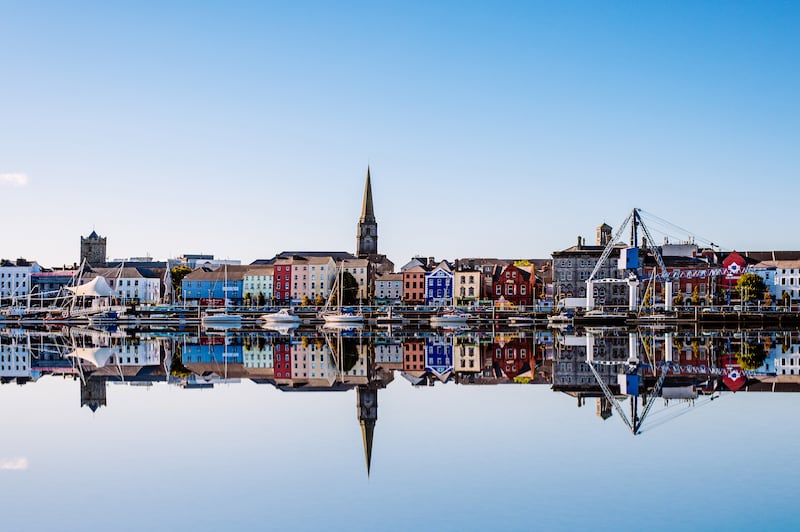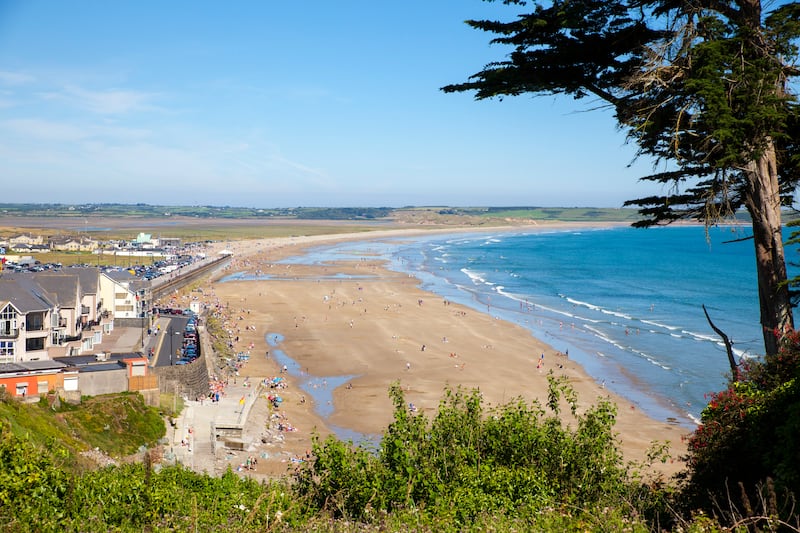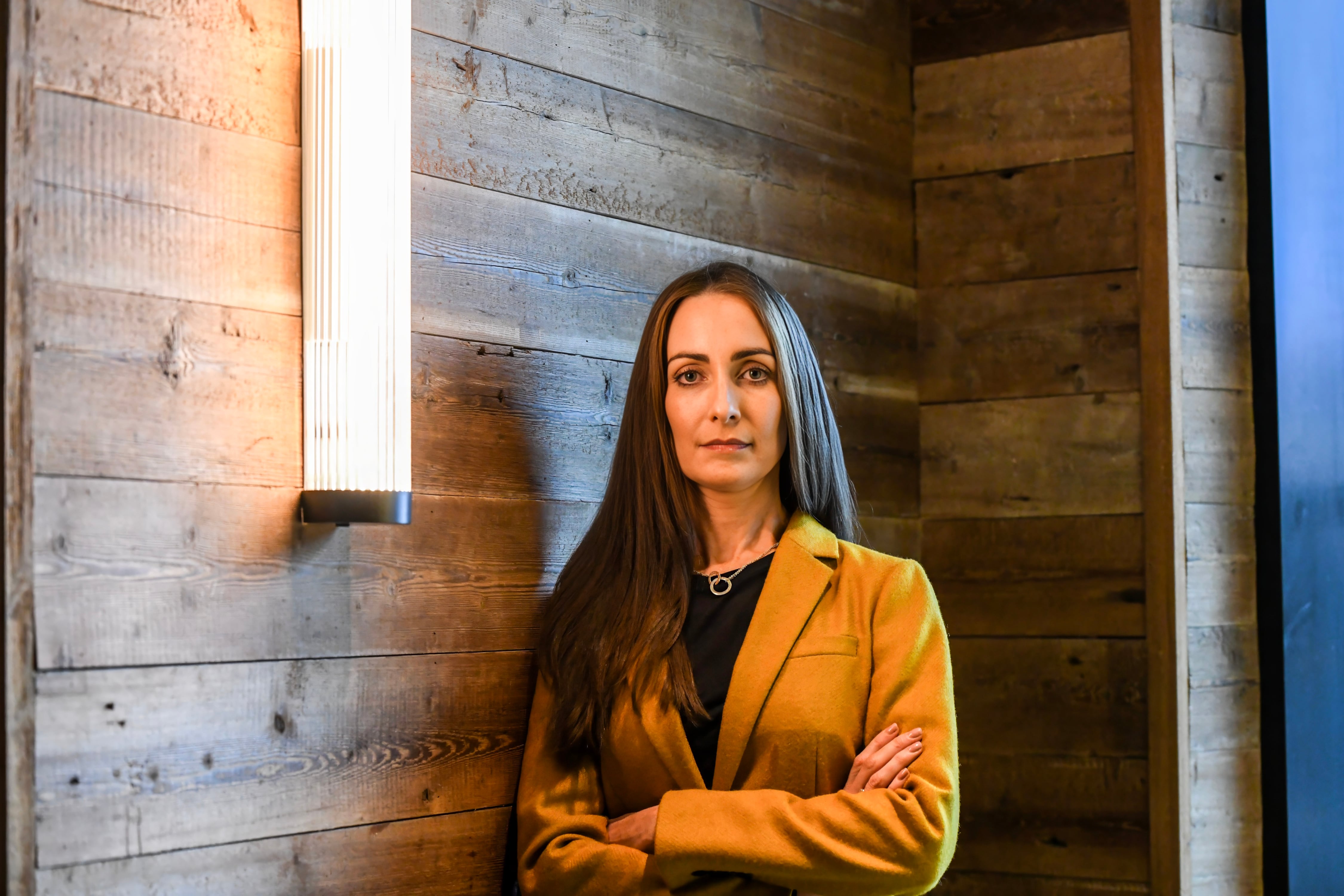From his low-key offices in Waterford’s City Enterprise Centre, David Brennan has steered his business, Eastgate Engineering, to high-profile success.
The company is currently providing mechanical and electrical services to GE Vernova for the Pre-assembly of the wind turbine towers of Dogger Bank, the world’s largest offshore wind farms.
The statistics are mind-blowing. When complete Dogger Bank will comprise of 277 turbines, each as high as Dublin’s Spire, more than 140km off the north coast of England.
Together they will be capable of powering up to six million homes annually, producing 3.6 gigawatts (GW) of electricity, according to the Dogger Bank project developer. A further phase will add 2GW more, a total of 5.6GW. Put another way, that’s more than the whole of Ireland’s target of offshore wind power for 2030.
READ MORE
Yet it’s just one of a number of engineering projects the company, which employs 200 people, is involved in.
Others include Inch Cape, another offshore wind project, 15km off the coast of Scotland.
Here Eastgate Engineering is working on the offshore transformer module, as part of an initiative that will generate 1.2 gigawatts, enough to power more than 1.6 million homes.
“Working on 6.8 gigawatts of offshore wind is quite significant when you consider Ireland’s current offshore wind total output is only 0.025 gigawatts,” says Brennan.
Ireland’s superpower

Hopefully that will soon change.
On a visit to Dublin in 2022, European Commission president Ursula von der Leyen spoke of Ireland’s opportunity to become a “clean energy superpower”. It’s something Brennan is keen to champion.
“Ireland has a significant opportunity to develop a gigantic green industry, and create tens of thousands of long-term jobs, if we get things moving. But we need Government to act faster, with more ambition and imagination, to enable it to happen,” he urges.
For Brennan there are two key drivers, “The creation of cleaner energy, and the huge, long-term employment opportunities that will come with it,” he explains.
“We have 65,000 young people leaving our beautiful country each year now, for various reasons. I want to play my part in creating the opportunity for our young citizens to remain at home and build their lives with long term careers in the offshore wind industry, and in the circular economy that will be created by it.”
Brennan recently sponsored a tour of 30 students and staff from South East Technological University (SETU) in Waterford to visit the work under way on the Dogger Bank and Inch Cape projects. It also included a visit to the UK’s Net Zero Industry Innovation Centre, in Middlesbrough, a collaborative research facility that helps local businesses to reach their net zero ambitions. “We are the go to contractor for net zero,” says Brennan, whose UK offices are in nearby Bellingham.
The company provides engineering, construction, commissioning and maintenance services to a broad range of industrial and commercial sectors however, not just offshore wind.
For Brennan, one of its most exciting contracts is with mining giant Anglo American, at Woodsmith, the world’s largest mine of mineral polyhalite, a hydrated sulphite made of potassium, calcium and magnesium that is a natural, organic fertiliser with a low environmental footprint, 1.5 kilometres under the ground in North Yorkshire.
The Sterling £8 billion project will result in its extraction. In agriculture it has many benefits; it uses one third of the water of conventional fertilisers, and farmers only need to spread one third as much of it on the land.
“This is Ireland’s answer to our nitrates problem in agriculture. It will enable farmers to reduce the impact of environmental damage, while maintaining crop yields,” says Brennan.
Driven to succeed

Eastgate Engineering is a remarkable commercial success story but also something of a personal triumph for Brennan, who was born in a mother and baby home and spent most of his childhood in foster care, not all of it happy. Today he credits what he terms his “chequered childhood” with his drive to succeed.
With no money for college, after school he apprenticed as an electrician, and quickly began working on international projects on a consultancy basis. Ten years later, in 2015, he opened his current office.
Though he lives “just across the border” in Kilkenny, Waterford was the obvious place to locate the business, he says, and not just because “I went to school, played all my sports, and did all my socialising here”.
The first two contracts Eastgate Engineering subsequently won were in Wales and England. “There simply wasn’t enough going on in Ireland in the renewables sector at the time, and because I had a history of working in the UK, I knew the market,” he explains.
Today he employs 200 people across both his Waterford HQ and his operational centre in Teesside.
He is particularly keen to support the growth of his home market too. Having started well, with a pioneering wind farm off Arklow, Ireland has since become something of a laggard in offshore wind, he points out. Government help speeding up the planning system and investing in ports will help.
“Investing in our ports and developing offshore wind here would stop the brain drain going out of the country and give a future to our children that is sustainable and green,” he points out. “Without investment in the ports by the state, the country will not be prepared to enter the offshore wind industry at scale and meet our targets of 5GW installed offshore wind for 2030 and 37GW by 2050. The ports are the hub of everything we need to enable this industry to take off.”
Why Waterford?

As a father of three – a 22-year-old daughter and sons aged 17 and 15 – securing a future for the next generation is personal for Brennan. So too was his decision to raise them in the sunny southeast.
“It’s an attractive region to live, work and be educated in, with one of the best universities in the country in SETU. My children were all educated in Waterford and had a great choice of subjects open to them,” he says.
“The cost of living is more affordable and the city itself has terrific restaurants and bars and a great social scene. We also have some of the best beaches in the country, such as Tramore.”

Transport links are good too, including the ferry port at Rosslare and Waterford regional airport.
“We have a good mix of industries including pharmaceuticals, engineering and construction companies, and a strong manufacturing history, including food manufacturing, which makes it highly beneficial for foreign and domestic investors,” he adds.
“On top of that we have this enormous capacity for renewables in terms of offshore energy, and a port at Waterford that can play a big part in the wind industry – creating thousands of jobs.”
Read more here if you think you might want to set up business in Co Waterford














